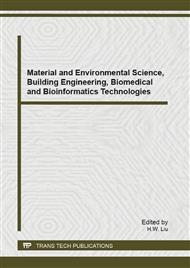p.570
p.575
p.579
p.583
p.587
p.590
p.594
p.598
p.607
The Role of Beclin1 Gene in Autophagy and Apoptosis Induced by Ionizing Radiation in MCF - 7 Cells
Abstract:
Objective To discuss the role of Beclin1 gene in autophagy and apoptosis induced by ionizing radiation in MCF - 7 cells. Methods MTT assay was used to detect the influence of cells proliferation when beclin-1 gene was over expression and interference. Flow cytometric analysis detected the change of MCF - 7 cells apoptosis after irradiating by X-ray. Western blot method detected total protein changes of beclin - 1. Results Beclin-1 gene was interferred partly, the amount of protein expression of MCF-7-beclin1Ri cells reached to the lowest at 4 h, rose at 8 h, got to the most at 16 h and decreased at 32 h, but still held at higher level;Beclin-1 gene over-expression, the amount of protein expression increased gradually with the extension of time, and got to peak at 32 h. Conclusions Ionizing radiation can stimulate beclin-1 and exist relations of dose - effects in MCF-7 cells.
Info:
Periodical:
Pages:
587-589
Citation:
Online since:
September 2013
Authors:
Keywords:
Price:
Сopyright:
© 2013 Trans Tech Publications Ltd. All Rights Reserved
Share:
Citation:


